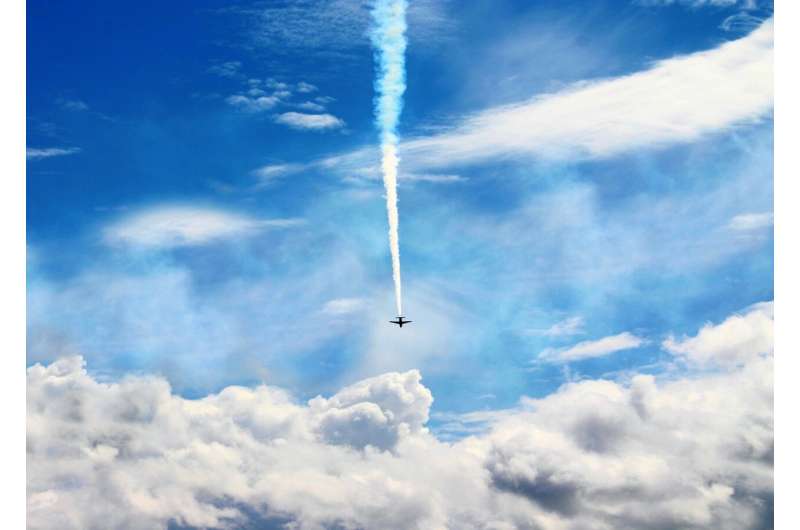Phys.org August 7, 2024
Contrails contribute over half of the positive radiative forcing from aviation, but the size of this warming effect is highly uncertain. In-situ observations have demonstrated an impact of aircraft and fuel type on contrail properties close to the aircraft, but there are few observational constraints at these longer timescales, despite these having a strong impact in high-resolution and global models. An international team of researchers (UK, Germany, USA – NASA Langley Research Center (VA)) found a relationship between aircraft type and contrail formation after investigating over 64 000 cases, with more efficient aircraft forming longer-lived satellite-detectable contrails more frequently, which could lead to a larger climate impact. They found that the increase in contrail formation and lifetime was primarily driven by an increase in flight altitude. Business jets which fly at higher altitudes produced longer-lived satellite-detectable contrails despite their lower fuel flow. According to the researchers increase in satellite-detected contrails behind more efficient aircraft suggests a trade-off between aircraft greenhouse gas emissions and the aviation climate impact through contrail production due to differences in aircraft operation… read more. Open Access TECHNICAL ARTICLE

Credit: Pixabay/CC0 Public Domain